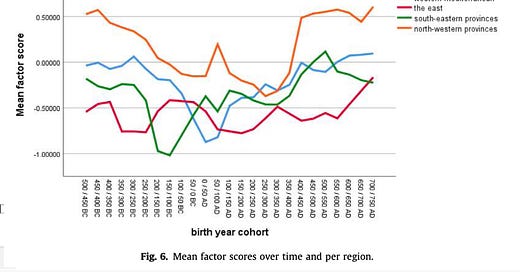Worth Teaching "Efflorescences & Dark Ages" in a History-of-Economic-Growth Unit?
& I, Somewhat Unexpectedly, Have Another Course to Teach in the Spring! Yes, I am picking up Econ 210a: Introduction to Economic History, for first-year graduate students in economics. & so it is...
& I, Somewhat Unexpectedly, Have Another Course to Teach in the Spring! Yes, I am picking up Econ 210a: Introduction to Economic History, for first-year graduate students in economics. & so it is time to think about rejiggering topics, & how to teach new ones...
So should I add “Efflorescences & Dark Ages” to the topics list, taking off from:
Goldstone, Jack A. “Efflorescences and Economic Growth in World History: Rethinking the ‘Rise of the West’ and the Industrial Revolution.” Journal of World History 13, no . 2 (2002): 323-389 <http://culturahistorica.org/wp-content/uploads/2020/02/goldstone-efflorescences.pdf>
?
Then there is the question of what Dark Age I should add—Early Iron Age, Mayan, or post-Roman? A fraught question, especially since we know little about the first, I know nothing about the second, and the third is subject to fraught debate. This, however, I find very, very nicely put indeed:
Bret Devereaux: Rome: Decline and Fall? Part I: Words: ‘Now bad was the fall of Rome in the West?…. Three part… ‘words’… ‘institutions’… ‘things and people’…. The continued existence of the Eastern Roman Empire is a free, massive point that the change-and-continuity argument gets to score at the beginning of these debates for free, every time….. Viewing this as the end of the Roman period gives quite a different impression than viewing it as the beginning of a new European Middle Ages….
Peter Brown… The World of Late Antiquity (1971) and more or less canonically in The Rise of Western Christendom (1st ed. 1996; 2nd ed. 2003, 3rd ed. 2013)… ‘change and continuity’ (in contrast to the traditional ‘decline and fall’), though I rather like James O’Donnell’s description of it as the Reformation in late antique studies. Among medievalists this reformed view, which focuses on continuity of culture and institutions from late antiquity to the early Middle Ages, remains essentially the orthodoxy….
[Among] ancient historians… what James O’Donnell describes as a ‘counter-reformation’… is well underway, a response to the ‘change and continuity’ narrative which seeks to update and defend the notion that there really was a fall of Rome and that it really was quite bad actually….
The reformed school [not fall but rather “transformation”] tends to be strongest in the study of the imperial east rather than the west (something that will make a lot of sense in a moment), and in religious and cultural history; the counter-reformation school is stronger in the west than the east and in military and political history, though as we'll see, to that list must at this point now be added archaeology along with demographic and economic history, at which point the weight of fields tends to get more than a little lopsided...
In my view, “more than a little lopsided” greatly understates the case.
Keep reading with a 7-day free trial
Subscribe to Brad DeLong's Grasping Reality to keep reading this post and get 7 days of free access to the full post archives.




